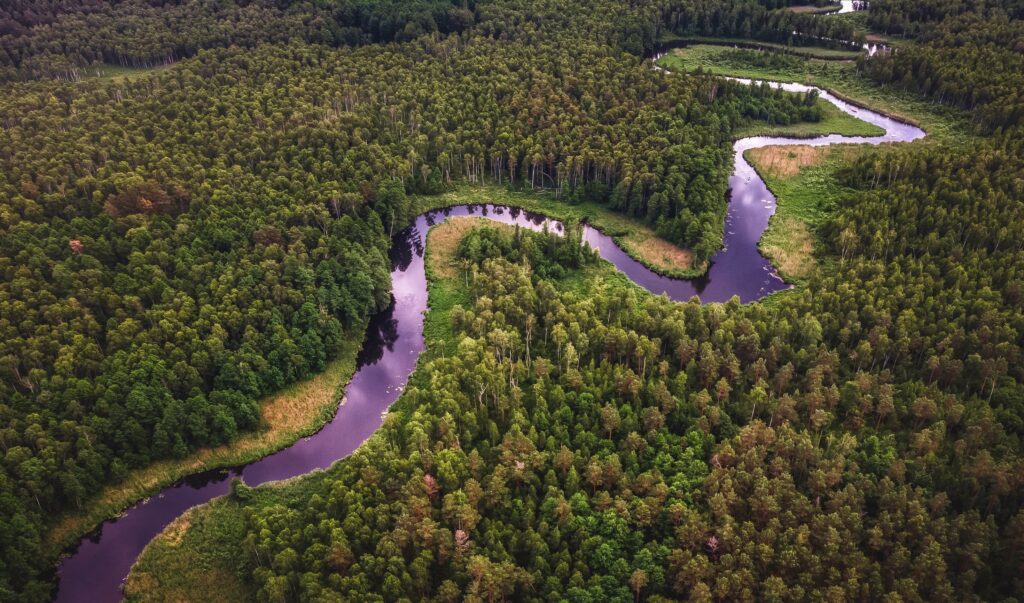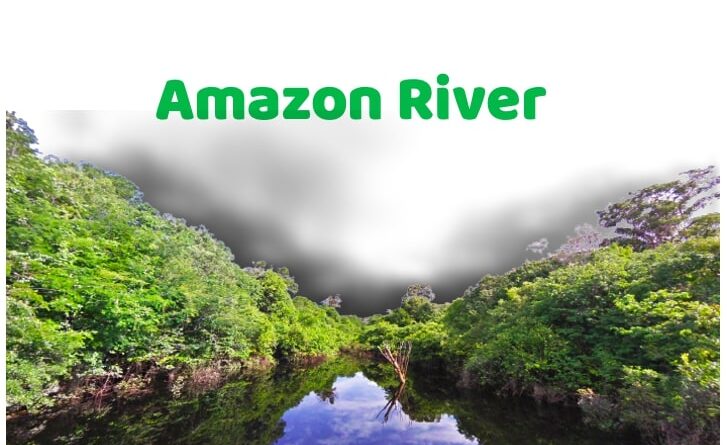Amazon River – What you Need to Know
The Amazon River is 6,992 kilometers long. The river is more than 48 kilometers wide at its widest point. It has a volume of water that can fill 210 million Olympic-sized swimming pools.
The Amazon River is a mighty one that carries over 20% of all water into the world’s oceans. The Amazon is also called “the river without a source.” Its basin covers an area of 5.4 million square kilometers, which includes parts of nine countries: Bolivia, Brazil, Colombia, Ecuador, Peru, Venezuela, Guyana, and Suriname.
Amazon River is one of the most important rivers in the world. It is also an important water source for millions living in South America. The river is almost 4344 miles long, and its drainage basin covers 9 South American countries.
History of Amazon River
The Amazon River is the largest river in the world by water discharge and the longest in terms of total length. Its source is located in Peru. It flows through Ecuador, Colombia, Brazil, Peru again, Bolivia and Venezuela before emptying into the Atlantic Ocean.
The Amazon River is one of Earth’s most important natural resources for humans. It provides water to over half a billion people around the world. It was also responsible for inspiring many stories from ancient times to the present day.
The story of how this mighty river came to be has been passed down through generations as a legend that tells how the Amazon River was created by an Andean god named Manco Cápac.
A)- Amazon River in Ancient Times
The Amazon River is one of the major rivers in the world. It is known for its biodiversity, as it contains around 1,100 species of fish.
Humans have inhabited this river since 12000 BC. It has been used for many purposes, such as fishing, transportation, and irrigation.
The Amazon River is also known for its biodiversity and the 1,100 species of fish that live in this river. This makes it an important food source for many people near this river.
B)- The Amazon in Renaissance Times
The Amazon in Renaissance Times is a period that is characterized by the rapid growth of European trade and exploration. The Amazon has changed many aspects of the world through history.
It has impacted the economy, culture, and society positively. The Amazon has been a significant part of the world since its discovery. Europeans first explored it during the 16th century. It was found to be inhabited by indigenous people who were given the name “Indians.”
They were later called “Amazonians” because their home was in the Amazon River Basin. The discovery of this new region changed many aspects of the world throughout history. It had an impact on the economy, culture, and society in a positive way.
Amazon is considered one of the most significant discoveries ever made. It led to other regions being discovered and explored, such as Africa, Asia, and South America.
Since the discovery of the Amazon, it has positively impacted the economy, culture, and society throughout history. In addition, it led to other regions being discovered and explored, such as Africa, Asia, and South America.
This period was also marked by new technologies and inventions, such as the printing press, gunpowder, and the compass.
During this time, Europeans were able to travel to different parts of the world to trade with other cultures. The European countries that emerged during this period were Spain, Portugal, France, England, and Holland.

C)- The Amazon in Modern Times
The Amazon River is the largest in the world by both the width and volume of water. It has been a source of life for those who live on its banks, providing them with food, water, and transportation.
The Amazon is one of the most important ecosystems in the world. The river is home to a vast number of species that are not found anywhere else on Earth. The Amazon River also provides people with a means to trade goods and services.
It has also played an important role in human history as native indigenous tribes used it to transport goods and as a food source.
The Amazon River Changed the World
The Amazon River is a river that starts in the Andes Mountains of Peru and ends in the Atlantic Ocean. It has been responsible for shaping and forming the geography of South America.
It changed how we live today by shaping South America’s geography. For example, the Amazon River was responsible for creating new rivers, lakes, and flooding regions when it flooded.
It also helped to shape South America’s climate by absorbing carbon dioxide from around the world and releasing oxygen back into the atmosphere. As a result, Amazon forests are called the “lungs of the earth.”
Amazon River affects our lives by providing us with a source of drinking water that is clean enough to drink without any treatment or filtration process needed before consumption.
The Amazon River has a great impact on the lives of people living near it. People rely on it for drinking water, food, electricity, transportation, etc. It also provides a lot of jobs for people living near it, such as fishing and farming in the Amazon region.

Key Fish Species in the Amazon River
The Amazon River is the largest in the world, with a total length of about 4,000 miles. It is also home to over 20% of the world’s fish species and more than 40% of all freshwater species worldwide.
It provides water for more than 1 billion people.
At least 10,000 fish species have been found in the Amazon River basin, and it has been estimated that there are around 200,000-400,000 different fish species living in it.
The Amazon river is important for humans because it provides us with water and food.
Sea Water Pollution in the Amazon Basin
The Amazon is one of the most biodiverse ecosystems in the world. The rainforest covers an area of 3.2 million square kilometers, equivalent to the United States’ size. Its rivers and streams provide drinking water for more than 20 million people, while its forests are home to at least 1,000 plant species and 400 types of mammals.
Despite this, it has been experiencing a rapid decrease in biodiversity due to deforestation and pollution from human activities such as farming and mining. The Amazon’s environment has been degraded by industrial agriculture and mining chemicals. These chemicals have also led to acid rain that has caused severe damage to the ecosystem’s soil, plants, animals, and aquatic life.
Zero Landfill – 2015 Plan
The Brazilian government launched a new environmental program called “Zero Landfill” in 2015. They are trying to phase out landfills’ use and reduce their pollution levels to try and stop this trend.
The Amazon rainforest was one of the few regions without large human settlements. Still, since European colonization, humans have inhabited and transformed the forest into areas that support human life.
This natural habitat is divided into three zones: the Amazon Basin, the Amazonian Forest, and the Amazonian Savanna. The main cause of deforestation is agricultural production and cattle ranching.
Human Impacts on Water Quality in the Amazon Basin
The Amazon Basin is the largest tropical rainforest in the world and is home to various ecosystems. However, the Amazon Basin experiences high levels of deforestation, negatively impacting water quality.
The human impacts on water quality are not just limited to deforestation. Humans also contribute to water pollution through industrial waste and agricultural runoff. These human impacts have led to the degradation of water quality in the Amazon Basin.

The Top 10 Tips for River Trippers on the Amazon
This answer provides the top 10 tips for river trippers on the Amazon. It also includes some of the best places to visit while on a river tour.
1)- Get a guide or hire one.
2)- Bring your own food and water.
3)- Get a boat with enough room for all your gear, plus one extra person if you are traveling with someone.
4)- Don’t forget to bring sunscreen, bug spray, and rain gear
5)- Find out what the current conditions are before going out onto the river
6)- Be aware of how different types of rivers look at different times of day
7)- Be careful not to get swept away in rapids
8)- Know where to go if you need help
9)- If you get sick or injured, don’t worry. That’s what the emergency gear is for
10)- Find out where you want to go so you can research your trip.
Final Thoughts
The Amazon River is one of the largest rivers in the world and is responsible for over 20% of the world’s fresh water. It is also home to a wide variety of flora and fauna.
As a result, it has more species than any other river. For example, the Amazon River has over 2,000 types of fish, 1,200 types of birds, and over 100 mammal species.
With such an important resource at its disposal, it would be logical that many countries have been interested in this river since its discovery by Europeans in the 1500s.
However, it was not until recently that tourism started to take off as a major industry on this river – with Brazil being at the forefront with plans to invest $1 billion this year.
The Amazon River is a major water source for many countries. It has been an important part of life for centuries. The river provides a reliable water source for millions of people and an important transportation route.
FAQs
What is the Amazon River?
The Amazon River is the largest in the world. It starts in the Andes Mountains in Peru and runs through Ecuador, Peru, Bolivia, Brazil, Colombia, Venezuela, and Guyana.
The Amazon River is a major source of water for South America. The river provides more than 400 million people in its basin.
How did the Amazon River get its name?
The Amazon River is the second largest river in the world by discharge volume and the largest in total water flow. The name Amazon River comes from a word meaning “river that produces smoke” in various indigenous languages.
The Amazon River got its name because it was originally called the Marapanema River by Portuguese explorer Francisco de Orellana who, on 2nd May 1541, became the first European to see it.
How does Water Flow from the Amazon Basin to the Sea?
The Amazon basin is a vast area of the Earth with dense rainforest. It also has more than a thousand rivers and tributaries that flow into the Atlantic Ocean.
Water flows from the Amazon Basin to the sea in two ways: through rivers and streams, which are small, fast-flowing bodies of water that eventually join larger rivers or form delta regions; and through large tributary rivers, which are slow-moving bodies of water that ultimately join larger rivers or create delta regions.
The Amazon River is one of the largest tributary rivers that flows into the Atlantic Ocean. It has a length of about 4,344 miles (6,992 km) and drains an area of about 1 million square miles (2.5 million square kilometers).
What makes the Amazon River so important to global tourism
The Amazon River is a river in South America that has been the subject of many books and movies. It is also the world’s largest river by width and discharge.
The Amazon River is important to global tourism because it provides a natural habitat for wildlife, including some of the largest primates in the world. It also has a diverse ecosystem with unique biodiversity, including lush rainforests, swamps, and rivers.
The Amazon River also connects to other bodies of water through its tributaries, which provide access to more than one-third of all freshwater on Earth. This makes it important for fishing and transportation purposes as well as tourism.
How has tourism changed since the Amazon river came into popularity?
Amazon river has changed the way tourism operates in Brazil. It has become a big tourist destination, and its popularity is increasing yearly.
Tourism in Brazil was not as popular before the Amazon river came into prominence. The Amazon River is now a big tourist destination with its unique culture and traditions. This has led to a change in how tourism operates in Brazil.
Why Global Travelers Should Still Visit The Amazon River
The Amazon River is not just a river that flows through the Amazon rainforest. It is also one of the world’s most important and largest rivers. The river has been around for millions of years, and it has been attracting people from all over the world to visit its shores since ancient times.
The Amazon River is home to many different species of plants, animals, and insects found nowhere else in the world. This makes it an important location for researchers and scientists who study these species.
The Amazon River is also home to a diverse culture and society which has been around for thousands of years. Many indigenous tribes live along its banks, including the Xingu tribe, who have lived there since before Europeans arrived in Brazil.
The Amazon River is a wild and untamed river that has been home to many cultures for centuries. It is the largest river in the world and has been a part of several civilizations.
Are Largest Fishes in the World Hiding in the Amazon River?
Much freshwater fish are in the Amazon River, but the largest ones hide in a deep part of the river.
The Amazon River is one of the world’s largest rivers and is home to many freshwater fish species. However, some species are so big that they can’t be found anywhere else on Earth. These giant fishes live in a deep part of the river and only come out to feed at night.
Is the Amazon River thicker than Some Vast Pools of Oceans?
This is a question that has been on the mind of many people for quite some time. For example, many have debated whether the Amazon River is thicker than the vast pools of oceans.
Some scientists believe that the Amazon is indeed thicker than the ocean. However, they must compare both bodies with a specific measuring tool to make this claim.
The Amazon River is about 3,200 feet deep. It has a volume of 1 million cubic kilometers. At the same time, the oceans are about 10 million cubic kilometers in volume and are only around 1-2 km deep.
Related Post
1)- Best Time to Visit Death Valley
2)- Veliky Novgorod – A Historical Russian City
3)- Russia – History and Geography




